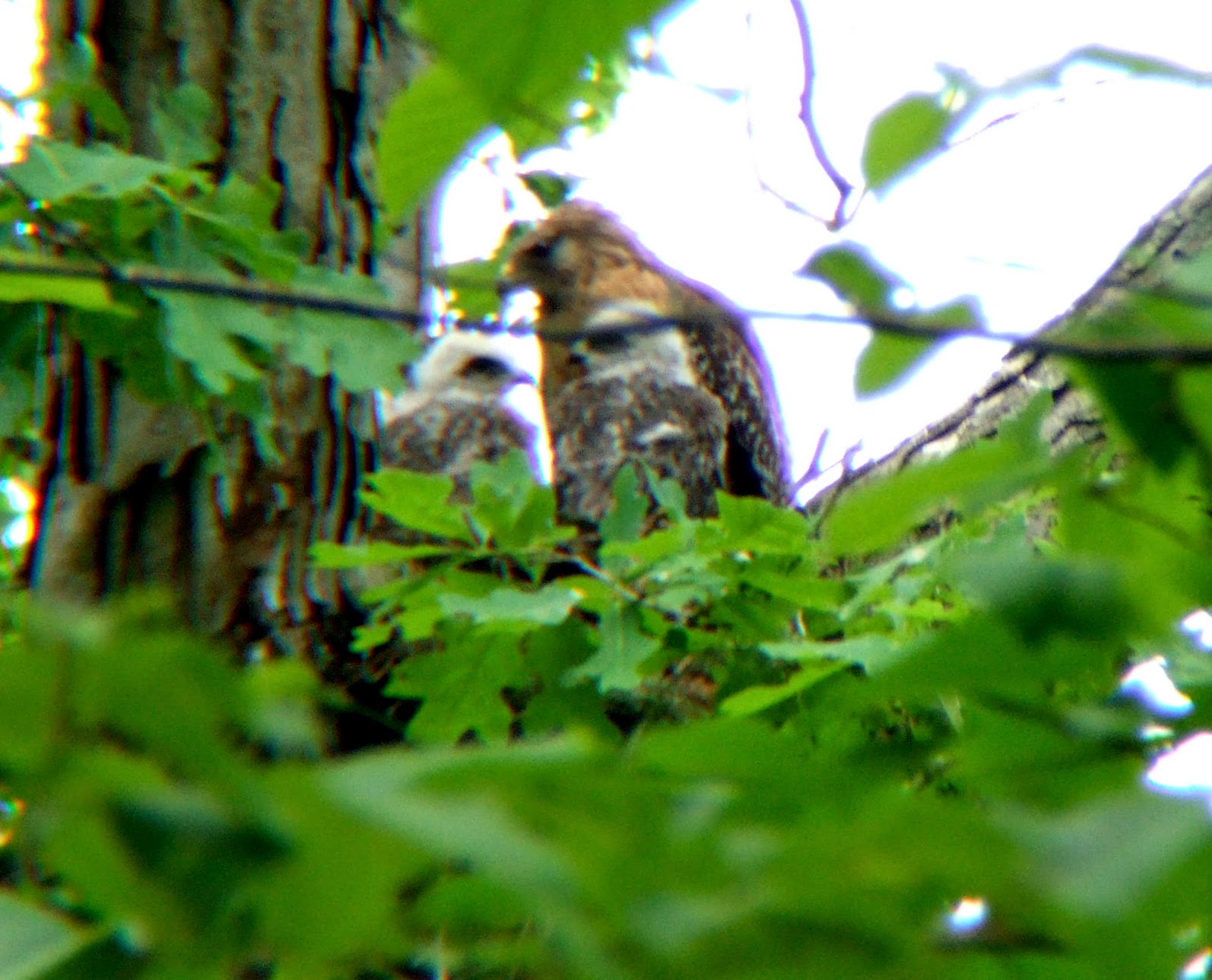
Sometimes we get so used to seeing the usual suspects at the bird feeders along Bull Creek that we don't pay attention to the birds. Other times we look out the window and see something that knocks our socks off. Even I recognized something was different when I saw this bird perched just below the feeder.
This beauty is a juvenile red-shouldered hawk, Buteo lineatus. This species takes ownership of the skies of Bull Mills, announcing its presence with its piercing "kee-aah" call, with the second note descending in pitch. It will repeat the call every few seconds for 5-10 times.
Unlike the more common red-tailed hawk seen in the open farmlands and prairies and along highways, the red-shouldered hawk favors deciduous woodlands, especially near streams and swamps. They are commonly seen soaring over the hills that surround the valley of Bull Creek.
This is not a bird which likes to pose. We were fortunate in 2007 to find a nest under construction close to our road. The parent bird would grudgingly permit photographs occasionally before flying off. Once committed by the eggs, we could see more activity until the leaves obscured the view.
We checked the nest as they grew until one day they were gone. Two days later as we drove to the top of the woodlands above the valley we saw all three, sitting several hundred feet apart, flushing into the air to the north at our approach. Since then we think of red-shouldereds soaring above as one of "our birds."
We rarely get a chance to see one in camera range. Most pictures you see require a cannon sized lens and photo blinds. Jim Braswell posted an incredible series of red-shouldered hawk pictures he took by sliding close to a juvenile while out in a kayak.
 |
| Red-shouldered hawk from a kayak - Jim Braswell |
Show Me Nature Photography blog is listed under our favorites.
Audubon.org has just released their online Guide to North AmericanBirds. Its information on the red-shouldered hawk is at this link which you can compare to the Allaboutbirds.com link. Both resources are valuable.

